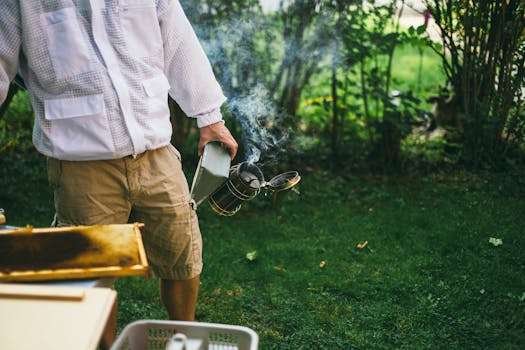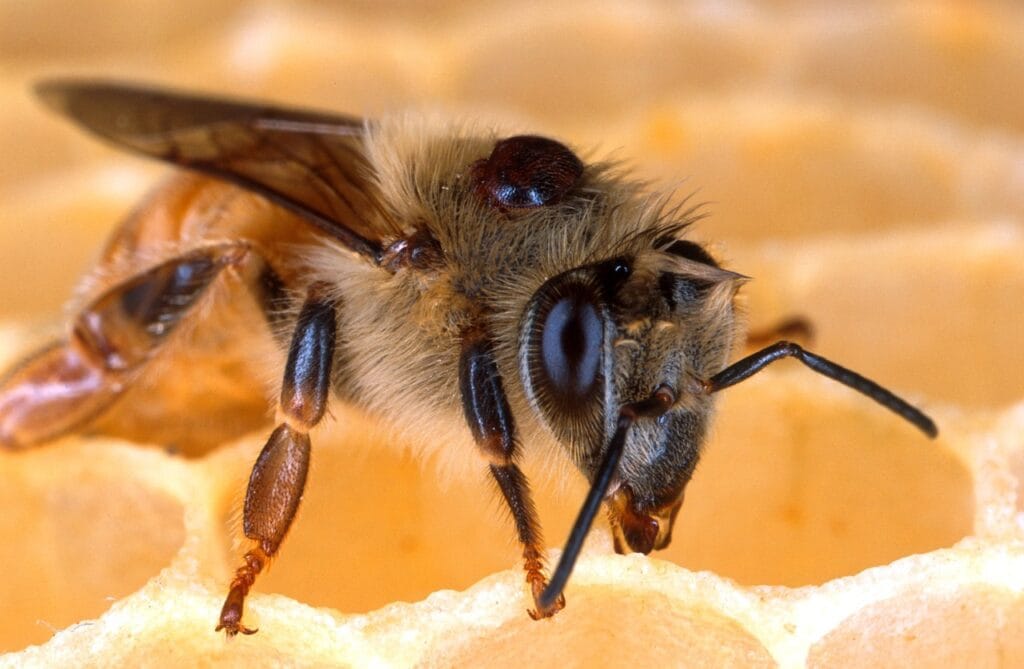Seasonal beekeeping management is the cornerstone of successful bee colony maintenance, requiring beekeepers to adapt their practices to the changing needs of their bees throughout the year.
Each season presents unique challenges and opportunities that demand specific management strategies to ensure colony health, productivity, and survival.[1][2]
Spring Management: Foundation for Success
Primary Goals: Prevention and Preparation
Spring represents the most critical period for beekeeping management, as colonies emerge from winter dormancy and begin rapid population expansion. The primary focus during this season is preventing starvation while supporting colony buildup for the active season ahead.[3][4]
Early Spring Tasks (March-May)
Queen Assessment and Colony Evaluation: Begin with thorough hive inspections when temperatures consistently reach 60°F (15°C) or higher. Look for signs of a healthy, laying queen by examining brood patterns and the presence of eggs. A quality queen should demonstrate consistent egg-laying with a solid brood pattern that indicates active reproduction.[2][4][5][6][7]
Nutrition Management: Spring feeding is essential as winter honey stores may be depleted while brood production increases. Provide 1:1 sugar syrup to stimulate brood production and supplement natural nectar sources. Monitor honey stores closely, ensuring colonies maintain at least 5-10 pounds of honey reserves. Emergency feeding with fondant or mountain camp feeding may be necessary during cold snaps.[8][4][9][1][2]
Varroa Mite Monitoring: Implement monthly mite counts and treat if levels exceed 2-4% infestation. Spring treatments are crucial as both bee and mite populations are building simultaneously. Use methods such as alcohol wash, sugar shake, or sticky boards to accurately assess mite levels.[9][10][11][12][13][2]
Equipment Preparation: Clean and repair hive equipment, replacing damaged components and adding fresh frames with foundation. Remove winter configurations like entrance reducers and mouseguards as temperatures warm.[4][14][2][9]
Space Management: Add supers and expand hive space as colonies grow, typically when colonies are 80% full. Monitor for swarming preparations and make splits as needed for swarm prevention.[15][16][2][3]
Summer Management: Production and Pest Control
Primary Goals: Honey Production and Health Maintenance
Summer beekeeping shifts focus to maximizing honey production while maintaining colony health during peak population periods.[17][18][3]
Honey Flow Management: Monitor nectar flows and add supers during periods of abundant nectar. The optimal time for supering coincides with active nectar collection when bees need additional storage space.[19][1][3]
Swarm Prevention: Conduct weekly inspections during swarming season (typically spring through early summer). Monitor for queen cells and ensure adequate space to prevent overcrowding.[20][1][2][15]
Heat Management: Provide adequate ventilation and shade during hot weather. Ensure water sources are available within 50 feet of hives. Watch for bearding behavior, which indicates the colony may need better ventilation.[18][3][17]
Continued Pest Management: Maintain monthly varroa mite monitoring and treat as necessary. Summer treatments must consider honey flow restrictions and temperature requirements for various treatments.[11][21][8][15]
Honey Harvesting: Harvest honey when frames are at least 80% capped and nectar flows have concluded. Timing is crucial – harvest too early and honey may ferment due to high moisture content.[22][23][24][25][19]
Fall Management: Winter Preparation
Primary Goals: Colony Strengthening and Resource Accumulation
Fall management focuses on preparing colonies for winter survival through adequate nutrition, pest control, and hive configuration adjustments.[26][27][28]
Final Health Assessment: Conduct thorough colony evaluations to assess queen status, population strength, and overall health. Address any issues with weak or queenless colonies through combination with stronger colonies.[27][29][28]
Critical Varroa Treatment: Fall represents the most important time for varroa treatment, as high mite loads significantly increase winter mortality risk. Monitor mite levels every three weeks and treat aggressively if necessary. Winter bees must be healthy to survive the dormant period.[28][30][31][21][11]
Nutrition and Feeding: Ensure adequate honey stores for winter survival – 60-90 pounds for northern climates, 30-50 pounds for central regions, and 20-30 pounds for southern areas. Begin fall feeding in August-September using 2:1 sugar syrup to encourage storage. Provide supplemental feeding with fondant or candy boards if stores remain inadequate.[32][24][22]
Hive Configuration: Remove excess supers and empty frames to reduce hive volume appropriate to colony size. This helps bees maintain proper cluster temperatures during winter. Reduce entrance sizes to prevent robbing and aid in hive defense.[33][29][34][35][8]
Winter Management: Survival and Planning
Primary Goals: Colony Survival and Season Planning
Winter beekeeping involves minimal hive manipulation while ensuring colonies have resources needed for survival.[36][37][38]
Monitoring Without Disruption: Observe hives externally on warm days, checking for flight activity and entrance cleanliness. Use techniques like gentle hive tapping to confirm colony presence without opening the hive. Monitor for signs of starvation, disease, or pest intrusion through debris examination.[38][35]
Moisture Management: Ensure proper ventilation to prevent condensation buildup while maintaining insulation. Moisture kills more colonies than cold temperatures, making ventilation management crucial. Tilt hives slightly forward to allow moisture drainage.[37][39][40][34][41]
Emergency Interventions: Provide emergency feeding only when necessary and weather permits. Monitor food stores through hive weight assessment (“hefting”) rather than opening colonies.[14][36][37][38]
Equipment Maintenance and Planning: Use winter months for equipment cleaning, repair, and planning for the following season. This is an ideal time for education, reading, and connecting with other beekeepers.[42][26][36]
Seasonal Integration and Long-term Success
Successful beekeeping requires understanding that each season’s management directly impacts colony performance in subsequent seasons. Winter bee production begins in late summer, spring buildup depends on fall preparations, and summer honey production relies on strong spring management.[43][30][31]
The frequency of inspections varies seasonally, with weekly checks during active periods (spring and early summer) and monthly or less frequent monitoring during dormant periods. Each inspection should have a clear purpose rather than following arbitrary schedules.[44][45][20]
In Summary
Effective seasonal management integrates multiple approaches: regular health monitoring, proactive pest management, appropriate nutrition support, and timely space management.
Success depends on understanding local conditions, as “all beekeeping is local” and regional factors significantly influence management timing and techniques.[1][15][9][43]
By following these seasonal management protocols and adapting them to local conditions, beekeepers can maintain healthy, productive colonies that successfully navigate the challenges of each season while providing optimal honey production and strong overwintering survival rates.
⁂
- https://abcbees.ca/blog/seasonal-beekeeping-tasks/
- https://backyardbeekeeping.iamcountryside.com/beekeeping-101/seasonal-beekeeping-calendar-zm0z24mazols/
- https://thebeesupply.com/blogs/beekeepers-blog/summer-hive-care
- https://galenafarms.com/blogs/beekeeping-checklists/march-beekeeping-checklist-preparing-for-spring
- https://www.perfectbee.com/a-healthy-beehive/inspecting-your-hive/the-big-issues-to-check-at-the-hive-inspection
- https://www.beekeepingmadesimple.com/blog/queenspotting-tips
- https://www.youtube.com/watch?v=BMsT1kBA-Sk
- https://www.thekeepershive.com/pages/overview-of-seasonal-management-tasks
- https://www.beekeepingmadesimple.com/blog/beekeeping-seasonal-guide
- https://nodglobal.com/seasonal-beekeeping-checklists-spring-and-summer/
- https://www.ars.usda.gov/pacific-west-area/tucson-az/carl-hayden-bee-research-center/research/varroa/how-to-monitor-sample-and-treat-for-varroa/when-to-sample/
- https://lopezuribelab.com/varroa-mite-monitoring/
- https://www.veto-pharma.com/honey-bee-health/varroa-control/varroa-infestation-monitoring/
- https://talkingwithbees.com/beekeeping-how-to-guides/beekeeping-calendar
- https://www.numberanalytics.com/blog/seasonal-beekeeping-tasks-guide
- https://www.beekeepingmadesimple.com/blog/howtocareforbees
- https://www.dadant.com/learn/beekeeping-tips-for-scorching-summers/
- https://farmfitliving.com/basic-beekeeping-summer-hive-management-guide/
- https://talkingwithbees.com/beekeeping-how-to-guides/harvesting-honey
- https://www.reddit.com/r/Beekeeping/comments/138n4pu/how_often_is_the_maintenance_for_beekeeping/
- https://honeybeehealthcoalition.org/wp-content/uploads/2022/08/HBHC-Guide_Varroa-Mgmt_8thEd-082422.pdf
- https://miller-mfg.com/blogs/blog/when-to-harvest-honey
- https://beeinspiredgoods.com/blogs/beekeeping/honey-harvest
- https://extension.okstate.edu/fact-sheets/beekeeping-honey-harvest-methods-costs-and-breakeven-calculations.html
- https://www.youtube.com/watch?v=yfVa-e4dkuo
- https://www.hobbyfarms.com/fall-maintenance-winter-preparation-bees-hives/
- https://blythewoodbeecompany.com/blogs/news/preparing-your-hives-for-the-fall-10-essential-autumn-beekeeping-tips
- https://nodglobal.com/seasonal-beekeeping-checklists-fall/
- https://underthegreenwood.co.uk/beekeeping-tasks-for-autumn/
- https://www.blog-veto-pharma.com/en/winter-hive-management-ensuring-healthy-bees-through-the-cold-season/
- https://extension.psu.edu/honey-bee-management-throughout-the-seasons/
- https://www.dadant.com/learn/mastering-autumn-feeding/
- https://www.mannlakeltd.com/blog/3-tips-for-how-to-winterize-a-beehive/
- https://gypsyshoalsfarm.com/blogs/the-bees/how-to-winterize-honeybee-hives
- https://www.honeybeesuite.com/the-ultimate-guide-to-overwintering-success/
- https://miller-mfg.com/blogs/blog/winter-tasks-for-beekeepers-ensuring-the-hive-thrives
- https://www.mannlakeltd.com/blog/how-to-care-for-a-beehive-in-the-winter/
- https://carolinahoneybees.com/winter-beekeeping/
- https://wvbahive.org/winterizing-bee-hives/
- https://www.betterbee.com/instructions-and-resources/10-point-pre-winter-hive-checklist.asp
- https://www.reddit.com/r/Beekeeping/comments/16ht2gb/how_to_winterize_a_beehive/
- https://cals.cornell.edu/pollinator-network/beekeeping/overwintering
- https://idtools.org/thebeemd/index.cfm?pageID=3094
- https://beeculture.com/how-to-inspect-evaluate-your-hive/
- https://www.honeybeesuite.com/my-one-rule-for-hive-inspections/



